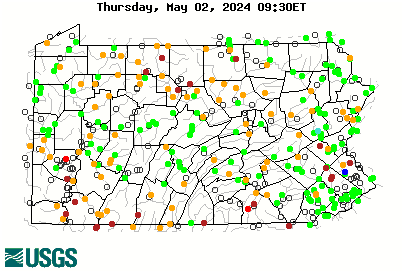You are using an out of date browser. It may not display this or other websites correctly.
You should upgrade or use an alternative browser.
You should upgrade or use an alternative browser.
Forum list
Forum Announcements
- Threads
- 8
- Messages
- 20
Site and Forum Comments
Any topics as they relate to the PaFlyFish web site and forum.
- Threads
- 485
- Messages
- 3.9K
- Threads
- 485
- Messages
- 3.9K
- Threads
- 325
- Messages
- 2.5K
Fly Fishing Events and Meet-ups
Fly fishing events, meet-ups and announcements
- Threads
- 1.3K
- Messages
- 19.5K
- Threads
- 1.3K
- Messages
- 19.5K
Open Forums
Paflyfish General Forum
Open forum for all topics related to fly fishing
- Threads
- 12.7K
- Messages
- 240.3K
- Threads
- 12.7K
- Messages
- 240.3K
Beginner Forum
If you're new to fly fishing or brushing up on some of the basics, visit here. Don't be shy!
- Threads
- 1.3K
- Messages
- 20.6K
- Threads
- 1.3K
- Messages
- 20.6K
Fly Tying
The place to share and swap fly tying discussions.
- Threads
- 4.8K
- Messages
- 66.2K
Sub-forums:
- Threads
- 4.8K
- Messages
- 66.2K
- Threads
- 535
- Messages
- 5K
Warm Water & Salt Water Fly-Fishing
Topics for warm water and salt water fly-fishing in the region
- Threads
- 2K
- Messages
- 24.6K
- Threads
- 2K
- Messages
- 24.6K
Conservation
Topics as they relate to conservation efforts and topics in the Pennsylvania region.
- Threads
- 1.5K
- Messages
- 20.3K
- Threads
- 1.5K
- Messages
- 20.3K
Gear Talk
Forum open to line, leaders, waders, all fly fishing gear and reviews
- Threads
- 4.8K
- Messages
- 65.2K
- Threads
- 4.8K
- Messages
- 65.2K
- Threads
- 945
- Messages
- 11.5K
- Threads
- 1.7K
- Messages
- 6.1K
Print, Video, Audio Discussions
Discuss your favorite fly fishing literature, DVDs, podcasts, etc.
- Threads
- 759
- Messages
- 5.9K
- Threads
- 759
- Messages
- 5.9K
Member Forums
The Pennsylvania Fly Fishing Traveler
A forum to share travel ideas on restaurants, bars, brewpubs, campgrounds and hotels when you are fly fishing in the region.
- Threads
- 64
- Messages
- 1.2K
- Threads
- 64
- Messages
- 1.2K
Travel and Adventure
An out of state travel forum for trips, lodging and food beyond our borders
- Threads
- 306
- Messages
- 2.9K
- Threads
- 306
- Messages
- 2.9K
Class A Wild Trout Streams Explained: What Every Fly Fisher in PA Should Know
Aug 27
- 753
- 20
Class A Wild Trout Team in Pennsylvania ©Dave Kile
Origins & Purpose: Pennsylvania’s Class A Wild Trout Program
If you’re new to trout fishing in Pennsylvania, you might hear seasoned anglers talking about "Class A Wild Trout Streams." These streams are considered by many to be some of the best places in the state to find naturally reproducing trout. But what exactly does "Class A" mean, and why are these waters so important?
A Turning Point in 1983: Operation Future
Back in the early 1980s, the Pennsylvania Fish & Boat Commission (PFBC) was looking for a better way to manage trout fishing. At the time, most trout fishing relied on stocking hatchery-raised fish. But biologists noticed that some streams had wild trout populations strong enough to support fishing without any stocking.The PFBC introduced the Resource First concept in 1981, marking a major shift in how the state manages its aquatic resources. Instead of prioritizing recreational fishing alone, this philosophy placed the protection, conservation, and long-term sustainability of fish populations and aquatic habitats at the center of decision-making. It recognized wild, self-sustaining fish populations as renewable natural assets and supported stocking only where natural reproduction could not meet angling demand.
In 1983, PFBC launched Operation Future, a program designed to manage trout fisheries based on science and sustainability. Rather than focusing only on stocking, the new goal was to protect streams where trout could reproduce naturally and survive on their own. These high-quality waters were given the official label: "Class A Wild Trout Streams."
Operation Future wasn’t just an operational shift—it was a cultural transformation for fisheries management in Pennsylvania. It elevated wild trout conservation from an ideal to a structured...
Latest posts
-
-
-
Poll - Do You Support The PFBC Stocking Over Class A Streams?
- Latest: The Rodfather
-



